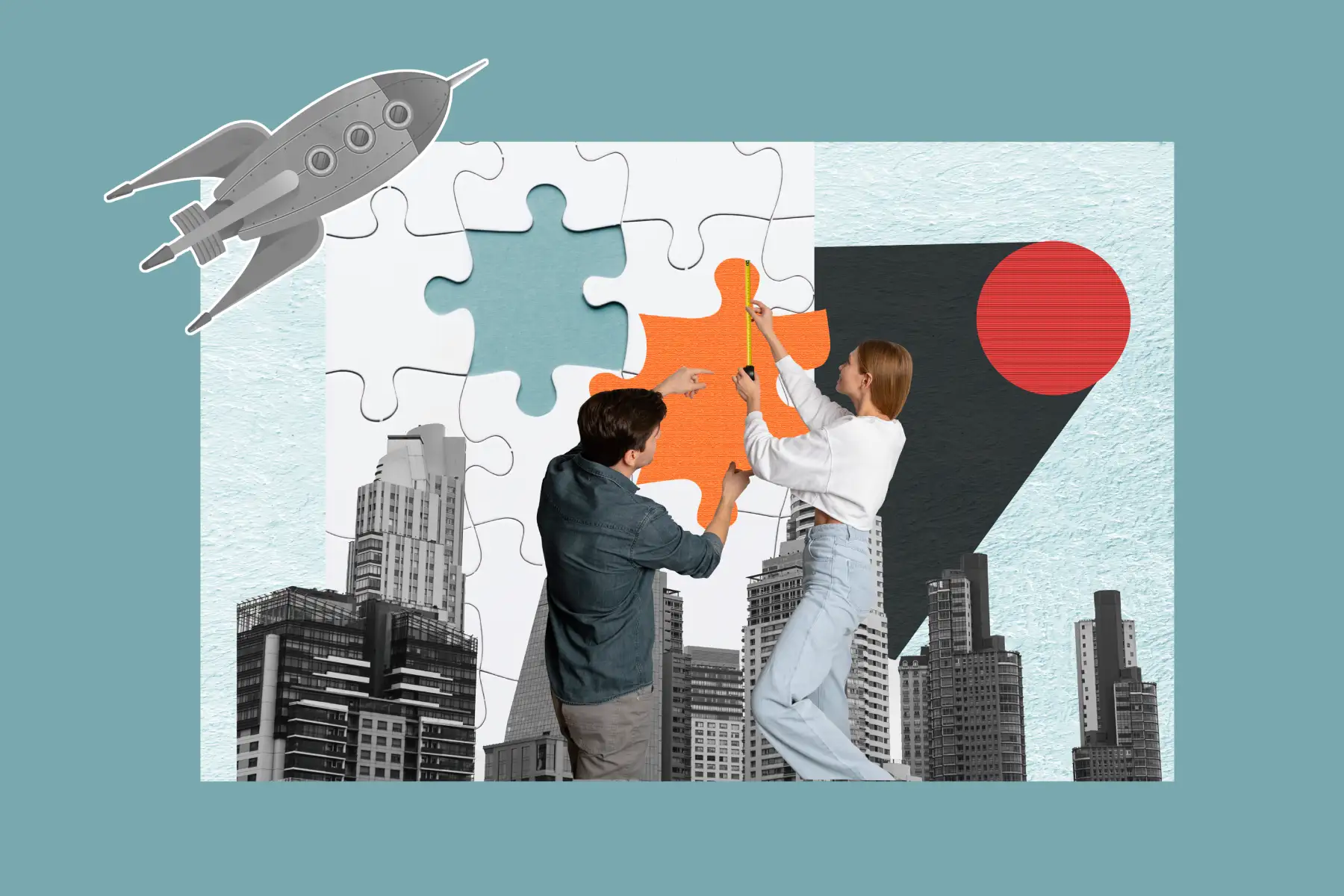I. Introduction
The modern business environment is characterised by continuous disruption. From technological innovation and market volatility to geopolitical uncertainty and environmental crises, change is occurring at an unprecedented pace. Globalisation and digital transformation have further accelerated this shift, leaving organisations to grapple with increasingly complex dynamics and requiring them to be more adaptable than ever before.
While change presents challenges, it also creates opportunities. Businesses that quickly adapt to evolving conditions, embracing innovation and developing a culture of resilience, are better equipped not only to survive but also to thrive in this volatile landscape. The key lies in fostering resilience—both at an individual and organisational level—to future-proof against uncertainty while building agility for opportunities.
This whitepaper explores the concept of resilience, factors that strengthen it, and evidence-based strategies for navigating and thriving in a world of rapid change. Using real-world case studies and academic research, we offer actionable insights for organisations seeking to position themselves as leaders in a constantly evolving world.
II. Psychological Resilience
Understanding Resilience and its Importance
Resilience refers to the ability to withstand, recover from, and adapt to challenges or disruptions. In psychology, it is defined as the process of adapting well in the face of adversity, trauma, or significant stress (American Psychological Association, 2020). At its core, resilience provides individuals and organisations with a framework for navigating change effectively and emerging stronger.
In the corporate context, resilience has become a key differentiator. According to a McKinsey study (2020), organisations characterised by resilience were five times more likely to deliver long-term value through periods of economic turbulence compared to those without it. Resilience is not about avoiding change or difficulty but learning how to adapt, capitalise on opportunities, and create sustainable success despite uncertainty.
Factors That Contribute to Resilience
- Emotional Regulation: Resilient individuals demonstrate the ability to manage their emotions effectively, staying calm and focused under pressure. Emotional intelligence is a critical component, as it helps people navigate ambiguity with confidence and empathy (Goleman, 1996).
- Growth Mindset: Coined by Dr. Carol Dweck, the “growth mindset” refers to the belief that challenges and failures present opportunities for learning and improvement. Cultivating a mindset that views change as a springboard rather than a hurdle is vital to resilience.
- Optimism and Self-Efficacy: Belief in one’s ability to influence outcomes inspires proactive responses to challenges. Optimism supports mental well-being and encourages forward-facing action.
- Social Support Networks: Strong interpersonal relationships—both at work and at home—significantly enhance resilience by providing emotional support and opportunities for collaborative problem-solving.
- Adaptability: The ability to embrace new approaches, innovations, or work methods is critical in rapidly changing environments. Adaptability allows organisations and individuals to shift resources and efforts in response to disruptions.
III. Strategies for Thriving Amidst Change
Adaptive Leadership and Flexibility
Leaders play a crucial role in guiding organisations through turbulent times. Adaptive leadership, a concept popularised by Heifetz and Linsky (2002), refers to the ability to navigate challenges and complexity by leveraging creativity, emotional intelligence, and continuous learning. In rapidly shifting environments, adaptive leaders do not rely solely on established approaches; instead, they experiment, empower their teams, and embrace flexibility.
Key Actions for Adaptive Leadership:
- Be Open to Learning: Leaders must stay informed on emerging trends and technology. Encouraging continual upskilling within teams fosters collective adaptability.
- Lead with Empathy: Employees are more likely to feel secure and committed to change when leaders acknowledge their concerns and foster a sense of trust.
- Encourage Decentralised Decision-Making: Empowering teams to make decisions enhances agility by reducing bottlenecks.
Building a Resilient Organisational Culture
Resilience at the organisational level requires an intentional focus on culture. A resilient culture encourages flexibility, open communication, and shared accountability while remaining grounded in the organisation’s core values.
Strategies to Build a Resilient Culture:
- Foster Psychological Safety:
- Inspired by Amy Edmondson’s work, psychological safety enables employees to voice concerns, share ideas, and admit mistakes without fear of retaliation.
- Actions: Regular team check-ins and open feedback forums establish transparency.
- Embed Agility in Processes:
- Agile methodologies, such as Scrum or Lean, empower teams to iterate quickly and respond to new challenges through incremental improvements.
- Actions: Incorporate regular sprint reviews, retrospectives, and iterative workflows to ensure flexibility and adaptability.
- Emphasise Well-Being and Work-Life Balance:
- Resilience thrives when individuals feel supported holistically. Offering mental health resources, flexible working arrangements, and wellness initiatives can boost engagement and reduce burnout.
- Purpose and Meaning:
- Simon Sinek’s “Start With Why” emphasizes the importance of fostering collective resilience through a shared purpose. Organisations aligned around a meaningful mission flourish in times of uncertainty.
- Actions: Foster a culture of storytelling to reinforce the “why” of the organisation’s vision, especially during change initiatives.
IV. Real-World Examples
Example 1: Netflix’s Culture of Reinvention
Netflix has consistently adapted to changing technologies, customer preferences, and market disruptions over the last two decades. Initially a DVD rental business, it transitioned into a streaming platform and later into a global content creation powerhouse.
Key Strategies:
- Continuous Innovation: Netflix has invested in technology, data analytics, and artificial intelligence to enhance the user experience consistently.
- Flat Hierarchies: Employees are given high levels of autonomy, enabling them to be creative and make rapid decisions.
- Embracing Failure: Netflix’s culture encourages calculated risks. Leadership views failures as stepping stones to innovation.
Outcome:
By continually reinventing itself, Netflix positioned itself as a market leader, even when competitors like Disney and Amazon entered the streaming space.
Example 2: Unilever’s Sustainability-Led Resilience
Amid shifting consumer priorities around sustainability, Unilever leveraged its purpose-driven initiatives to thrive. From 2010, it adopted a corporate strategy called the “Sustainable Living Plan,” integrating environmental and social goals into its operations.
Key Strategies:
- Shared Purpose: Employees were aligned around a mission of creating sustainable value for society, reinforcing collective resilience.
- Agility in Leadership: Unilever decentralised decision-making to allow for quicker responses to shifts in consumer sentiment.
- Stakeholder Collaboration: The company effectively partnered with governments, NGOs, and consumers to support sustainable innovation.
Outcome:
Unilever outperformed its peers in terms of growth and reputation, demonstrating that resilience can be achieved by aligning corporate goals with societal values.
Example 3: Toyota’s Response to the 2011 Tsunami
In 2011, Toyota faced significant disruption when a tsunami in Japan interrupted its supply chain. The company’s pre-existing culture of resilience enabled it to recover quickly and minimise losses.
Key Strategies:
- Kaizen (Continuous Improvement): Toyota implemented minor, incremental operational adaptions across its assembly lines.
- Supplier Collaboration: The company strengthened its relationships with supply chain partners to facilitate collaborative problem-solving.
- Emergency Preparedness: Toyota’s foresight in building buffer stocks and disaster contingency plans enabled it to restart production more quickly than its competitors.
Outcome:
Despite the devastating event, Toyota maintained business continuity and came back stronger, setting an industry standard for resilience.
V. Conclusion
Recap of Resilience Strategies
Thriving in a world of rapid change is increasingly reliant on resilience—both at personal and organisational levels. This whitepaper has explored:
- The psychological foundations of resilience, including emotional regulation, growth mindset, and adaptability.
- Leadership approaches such as adaptive leadership and decentralised decision-making, which empower organisations to pivot effectively.
- The critical role of organisational culture is underpinned by psychological safety, agility, and shared purpose.
- Real-world examples of companies like Netflix, Unilever, and Toyota showcasing the power of resilient strategies.
Future Implications for Businesses
The pace of change will only accelerate in the coming decades, driven by advancements in technology, globalisation, and shifting consumer behaviour. Organisations must go beyond just preparing for change—they must embrace it as an opportunity for growth. By embedding resilience into their culture and leadership, businesses can create sustainable competitive advantages, staying aligned with the needs of their people, customers, and markets.
Key Recommendations for Leaders:
- Develop adaptable leadership practices that encourage creativity and empower teams.
- Invest in a resilient organisational culture by supporting psychological safety and fostering collaboration.
- Monitor emerging challenges and trends to anticipate and proactively respond to change.
- Encourage ongoing learning and innovation at all levels of the organisation.
By implementing these strategies, organisations can stand resilient, prepared not only to withstand challenges but to leverage disruption as a driving force for progress and innovation.
References
- American Psychological Association. (2020). Resilience: A Process for Adapting to Adversity.
- Dweck, C. S. (2006). Mindset: The New Psychology of Success. Random House.
- Edmondson, A. C. (1999). “Psychological Safety and Learning Behaviour in Work Teams”. Administrative Science Quarterly, 44(2).
- Goleman, D. (1996). Emotional Intelligence: Why It Can Matter More Than IQ. Bantam Books.
- Heifetz, R., & Linsky, M. (2002). Leadership on the Line: Staying Alive Through the Dangers of Leading. Harvard Business Review Press.
- McKinsey & Company. (2020). “Building Long-Term Resilience in Organisations”.










